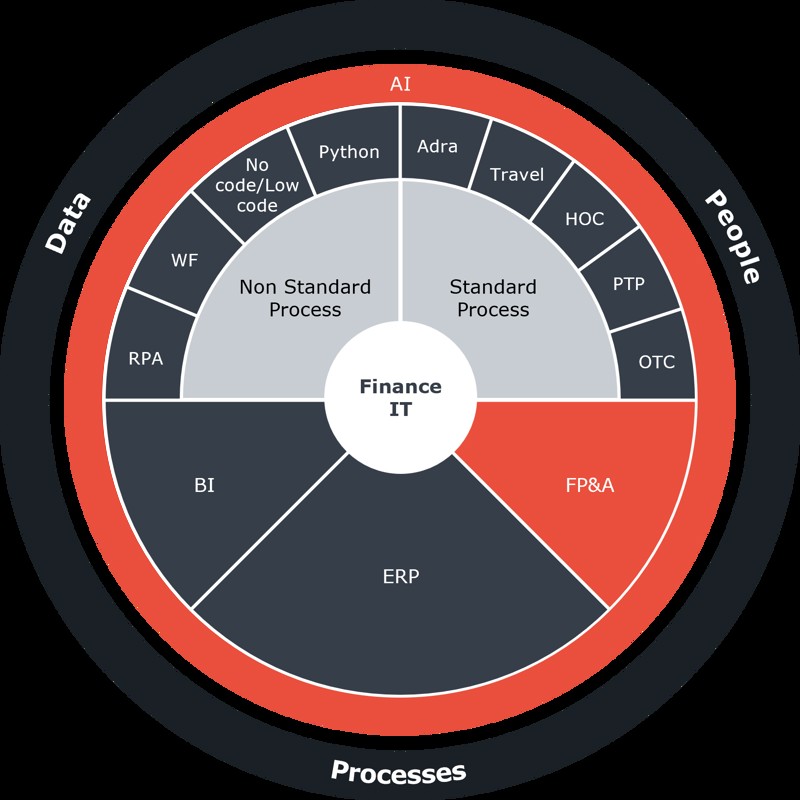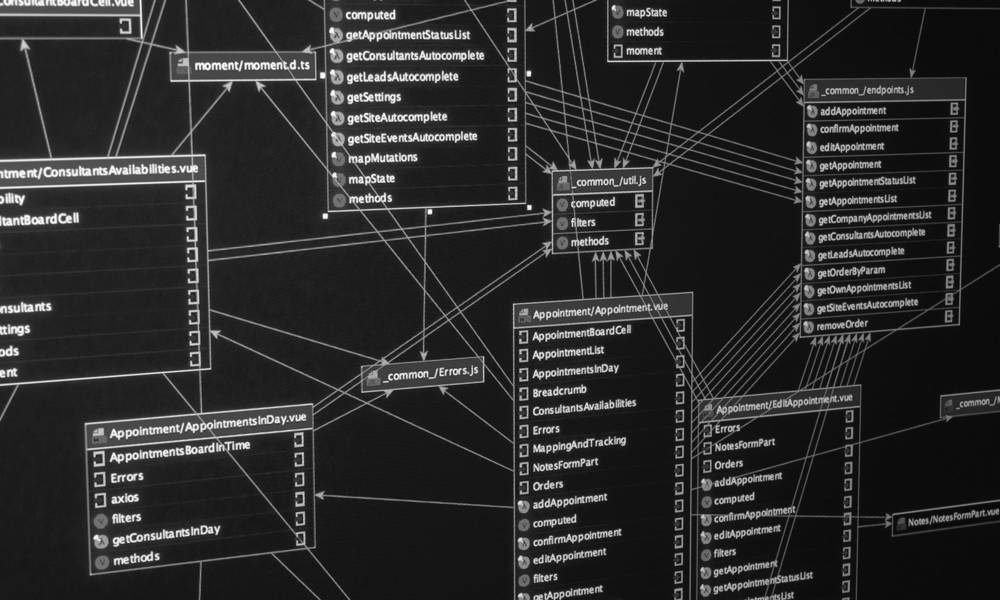Danish organisations are increasingly implementing AI and machine learning (ML) to improve their financial planning and analysis processes (FP&A). And for good reason. AI functions can help your organisation save time and also improve the accuracy and enhance the quality of your forecasts and budgets.
And it need not be difficult to get started. Though AI and ML are not new technologies, what is new is that they have become user-friendly for everyone.
The proliferation of AI functions has also increased to such an extent that today you can find AI modules integrated in both Excel, Google Sheets and the major specialised FP&A tools.
Therefore, this article brings you four specific suggestions for how to get the most out of using AI and ML for forecasting and budgeting.
From number crunchers to strategic partners
Your FP&A team probably knows the feeling of being pressed for both time and overview – often to such a degree that they don’t have sufficient time to act as analysts or provide support to the business because the process is so cumbersome and labour-intensive. And this is where AI can really make a difference. Because, used correctly, AI can help your FP&A department transition from being number crunchers to becoming finance business partners playing a central role in the organisation.
AI can automate many of the time-consuming routine tasks and deliver insights based on real-time data. And this makes it possible for your FP&A team to focus on value-creating activities such as strategic planning and decision-making – without compromising on the quality of reporting and numerical data.
Would you like to see a live demo in action? Contact Sylvester Hesseldal at Basico at shesseldal@basico.dk.
1. Predictive forecasting – easy, fast and reliable generation of rolling forecasts
Rolling forecasts are essential for organisations operating in dynamic markets. Until now, however, it has required significant manual effort to keep the relevant data and assumptions updated.
But it no longer has to be this way. AI and ML have made it possible to automate this process by replacing the previously time-consuming data entry with algorithms that can process and incorporate information in real time.
This function is called predictive forecasting.
And by analysing historical data and external factors, such as market trends or economic indicators, AI-driven rolling forecasts provide a more precise and agile approach to financial planning. This not only reduces the workload for FP&A teams but also ensures that your forecasts remain relevant and updated, even in volatile environments.
This provides a more accurate foundation for the decisions you make and can also enable you to act on opportunities that require shorter consideration time.
2. Improved forecast accuracy
If there is something AI and ML are good at, it is identifying patterns and trends in large datasets. And this capability is particularly valuable within forecasting, where the precision of predictions can be crucial for business decisions.
For example, AI can integrate external factors such as interest rates, meteorological data or labour market statistics into forecasts – factors that are otherwise often overlooked in traditional forecasting models.
3. Benchmarking with AI-generated figures
AI's ability to recognise patterns leads us to one of the most exciting applications within FP&A – namely benchmarking AI-generated forecasts against human-created estimates. AI algorithms can process large amounts of historical and external data, which they can use to produce very precise predictions.
By comparing the algorithms' predictions with the figures your FP&A department has generated, your organisation can identify any discrepancies, validate your assumptions and generally improve the overall quality of your forecasts.
This approach not only improves the accuracy of your predictions – it also builds confidence in the forecasting process because it leverages the best of human-created and machine-generated predictions.
4. Improved data quality and validation
Data validation is another area where AI can add truly significant value. Here, it is also AI's ability to find patterns that makes the difference.
AI models can also identify anomalies or deviations in your forecasts and budgets and highlight areas that require additional attention – for example if your estimates are improbably high or low in an area.
For example, the FP&A tool Workday Adaptive Planning has a function called 'anomaly detection', which uses ML to assess forecast or budget data and highlight potential deviations.
And this automated validation process can both reduce the risk of errors, reveal outliers and free up valuable time for your FP&A employees.
Want to know more?
Workday has summarised some of the AI/ML functionalities in Workday Adaptive Planning on this page: https://www.workday.com/en-us/products/adaptive-planning/ai-ml-for-financial-planning-and-analysis.html
What would it be an advantage to focus on?
Whether you are completely ready to press the start-AI button, or you are still warming up to the idea, it is important to know that the use of AI also entails some considerations worth making in advance.
If you choose to use AI in your financial planning process, it requires that your organisation has good data quality and confidence in your figures. If the AI is fed with flawed data, it will base its further work on these data.
Before you start using AI, we would also recommend that you consider who is responsible for the figures incorporated by the algorithm. Therefore, we encourage your FP&A department to establish a clear distribution of responsibility or a process description in advance, ensuring you check and quality-assess the AI's output before circulating it.
The last thing you should advantageously remember before implementing AI solutions in your FP&A department is to allocate resources for, for example, training, technical assistance and legal help to ensure that your organisation's use of AI complies with relevant legislation in the area.
Increased accuracy, higher quality, and time savings
For Danish organisations not to fall behind in terms of technological development, it is important to get started using AI – also when we talk about FP&A. And fortunately, there are many benefits to be gained. In short, the keywords are increased precision, higher quality and significant time savings.
AI applied in the FP&A function increases the possibilities for skilled and experienced FP&A employees to perform better analytical work and have time for strategy – while the algorithms handle the repetitive manual work.
AI and Machine Learning – what is the difference?
AI and Machine Learning are closely related, and often the terms are used interchangeably. So if you are confused, we understand completely.
In short, AI is the broad generic term that covers everything related to creating systems and applications that can mimic a form of human intelligence.
Machine Learning is a subcategory within AI that focuses on enabling machines to learn from data themselves. Machine Learning is defined by the machine identifying patterns and connections in data through models instead of being explicitly controlled by rules, as in ordinary software programming.
Competences – full-circle
When helping a Finance function digitalise and automate, we take pride in combining the applications and tools that will meet your specific demands. In a way so that the solution supports the data, processes and people working hard behind the lines.

Basico's digitalisation circle

Would you like more information about how your FP&A department can benefit from using AI?
We are ready to help you whether you want an initial talk about possibilities, advantages and disadvantages, or whether you need help implementing specific functions.

 en
en
 da
da




